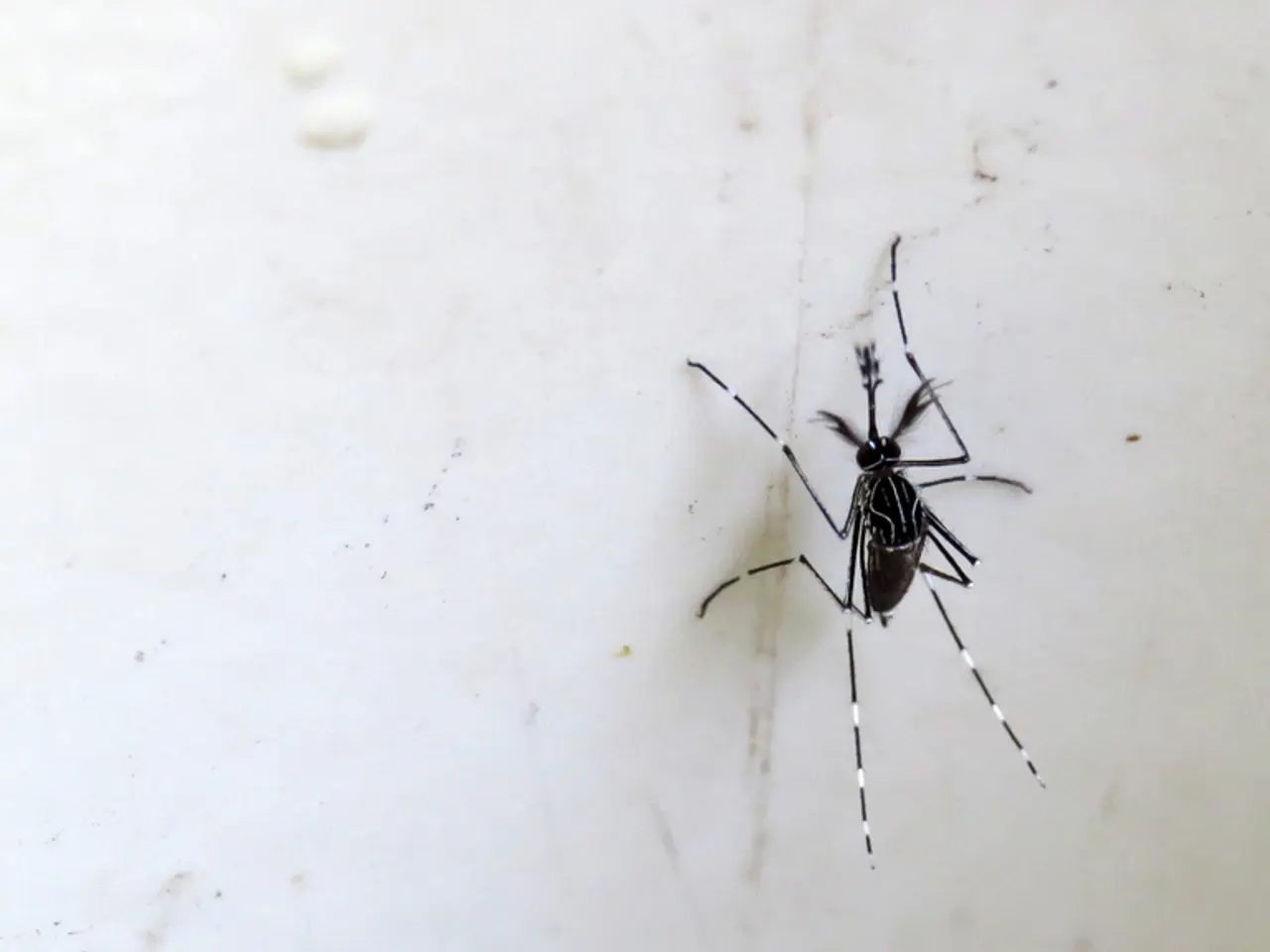Chickenpox outbreak in Russia will not escalate into a pandemic, claims epidemiologist
In recent news, Russia is facing a potential risk of an outbreak of Chikungunya fever, a mosquito-borne disease, due to the spread of the disease in nearby China, particularly in the Guangdong Province where over 10,000 cases were reported recently.
The disease, transmitted by Aedes mosquitoes that are present in Russia, is causing concern for health authorities. However, no cases have been confirmed yet in Russia. The national health agency Rospotrebnadzor has acknowledged the risk and is likely preparing corresponding preventive responses.
Preventive measures in Russia include monitoring travelers from Asia, public health warnings, and emphasizing mosquito control. A sanitary control system called "Perimeter" is functioning at the border to detect infected tourists.
In comparison with COVID-19, Chikungunya fever is transmitted by mosquitoes rather than person-to-person respiratory droplets. Prevention focuses on vector control (reducing mosquito populations and avoiding bites) instead of social distancing or mask-wearing.
While COVID-19 had widespread human-to-human transmission with severe respiratory symptoms and higher mortality, Chikungunya usually causes fever-related illness with joint pain and some neurological or cardiovascular complications but lower mortality. Immunity develops after infection, which is different from COVID-19, where reinfections occurred.
The World Health Organization (WHO) has issued updated management guidelines for Chikungunya and related viruses recently to aid timely diagnosis and treatment.
Key differences in measures:
| Aspect | Chikungunya (Russia) | COVID-19 | |-----------------------------|----------------------------------------------|--------------------------------------------| | Transmission | Mosquito-borne (Aedes mosquitoes) | Respiratory droplets (person-to-person) | | Prevention focus | Mosquito control, traveler screening | Social distancing, masks, vaccination | | Current status in Russia | No cases yet; risk acknowledged; preparation | Managed with vaccines and public health measures | | Disease severity | Fever, joint pain, some complications; low mortality | Respiratory illness, high spread, higher mortality | | Immunity | Usually develops after infection | Partial immunity, boosters often required |
As the incubation period for Chikungunya fever is 4 to 8 days, continuous monitoring of mosquito populations, which carry the Chikungunya virus, is being carried out. Symptoms of Chikungunya fever may include a sudden temperature rise to 40°C, severe joint pain, and skin rashes.
Doctors recommend analgesics, bed rest, and plenty of fluids to ease symptoms of Chikungunya fever. Protection against insect bites is the main preventive measure for Chikungunya fever. Domestic diagnostic methods allow for quick detection of Chikungunya infection.
It is important to note that Chikungunya fever is not a new disease, having been first discovered in Tanzania in 1952-1953. Complications or underlying diseases can increase the risk of fatal cases of Chikungunya fever. Fatal cases of Chikungunya fever are extremely rare.
Epidemiologists consider it incorrect to refer to Chikungunya fever as "corona 2.0". The recovery from Chikungunya fever usually occurs within a few weeks.
As the situation develops, it is crucial for individuals to stay informed and follow the guidance of health authorities. For more information, visit the official websites of the World Health Organization and Rospotrebnadzor.
The potential risk of Chikungunya fever spreading in Russia, a mosquito-borne disease, is causing concern for health authorities, who are emphasizing mosquito control as a key preventive measure. This disease, if contracted, may cause fever, joint pain, and skin rashes, and it is important to seek medical attention for proper diagnosis and treatment.
Unlike COVID-19, Chikungunya is transmitted by mosquitoes rather than person-to-person respiratory droplets, and immunity is usually developed after infection. The World Health Organization (WHO) has issued updated management guidelines for Chikungunya and related viruses to aid timely diagnosis and treatment.




